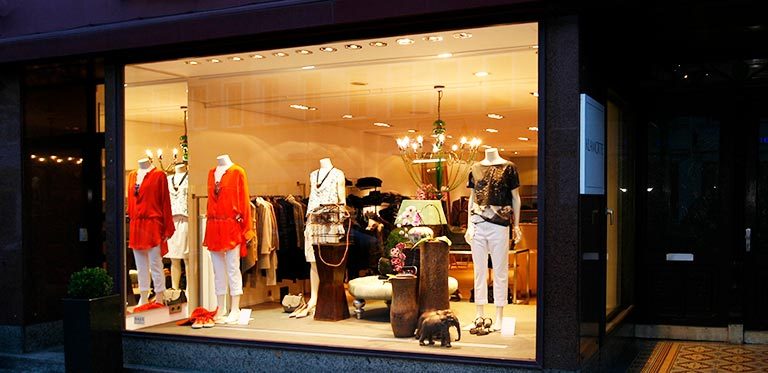
Klara and Emma Lump originally came from the administrative district Gelnhausen in the former province Hessen – Nassau. After finishing school, the sisters Klara and Regina Lump found employment in Max Stern’s short-, white- and woollen goods shop. Because there were several women with the first name Regina, Regina later called herself Emma Lump. The older siblings, Dina and Moses Lump, had already emigrated to the USA at a young age, which is why the younger children of the Lump family hardly knew them – if at all.
In 1906 Klara and Emma became professionally independent as milliners, which was very courageous of them, as the position of the women at that time was far below that of men. On 5th June, 1906 they moved to Kulmbach and opened the millinery “Geschwister Lump”. Four years later a further shop was acquired in Ludwigstraße 59 in Hof where Klara Lump also moved in. She married the teacher of Israelite religion Richard Wetzler in Kulmbach on February 20th, 1911 and moved with him to Ludwigstraße 55 in Hof. Her daughter Liese Ruth was born on 18th November 1911.
Later Richard Wetzler was summoned back to Nuremberg, so Klara and Ruth followed him after a few weeks. Despite the relocation, she continued to run the business from afar. On 20th February 1913 her sister Selma, who was also a modiste, moved into the flat of the shop and joined the company at the same time. About half a year later Emma Lump married the merchant Hans Lax in Nuremberg and moved together with him to her sister Klara and her husband in Ludwigstraße 55. Her mother Hanna died later on January 13th, 1915 in Kulmbach.
Hans Lax was drafted into military service on 6th May 1915 at the age of 34. On 15th September 1916 his younger brother Herbert Julius Lax fell, on 21st June 1916 Klara’s husband Richard Wetzler. The Jewish census carried out in the army on 1st November 1916 was a certain turning point in Jewish history. Before that Jews were citizens with all rights. Through this measure the feeling of exclusion returned to their lives. On 23rd November 1918 Hans Lax was released from military service and returned to Hof
In April this year also the wedding of Selma and the merchant Max Michaelis took place.
After the war, the business “Geschwister Lump” in Ludwigstraße 55 was one of the leading in the industry in Hof and the surrounding area. From 1918 to 1927 Hans Lax also operated a goods agency at Karolinenstraße 33. On 8th June 1927, a trade with underwear and corsets was also registered there. However, with the growth of the National Socialist movement, the family had more and more problems with the business, so that at the beginning of 1934 the complete company was moved to Karolinenstraße 33.
Klara Wetzler and her daughter emigrated to the Netherlands in 1936 where she had to live hidden. During her stay she remained in contact with her sister Emma by letter. In April 1937, the rest of the family was forced to close their business on the grounds that Emma Lax was Jewish. The couple also had to give up their apartment. Since the National Socialists exerted great pressure on them, the two moved to Leipzig on May 2nd 1939 and were accommodated there in a so called “Judenhaus” (house for Jews).
On 10th May 1942, the couple and 367 other persons were deported from Leipzig to the ghetto Bełżyce in Poland. It is not known how Emma Lax died. It can be assumed that she either died of hunger or illness in the ghetto or was murdered in an extermination camp. Her husband Hans was probably abducted to the Majdanek concentration camp. Selma was deported to Auschwitz on May 18th 1944 and never returned. In 1946 Klara left the Netherlands and emigrated to Argentina. In 1955 she applied for compensation for herself and her sister Emma at the age of 70. However, the German state never paid any compensation for the two Jewish women.
Source: Hübschmann 2019, p. 189 – 210